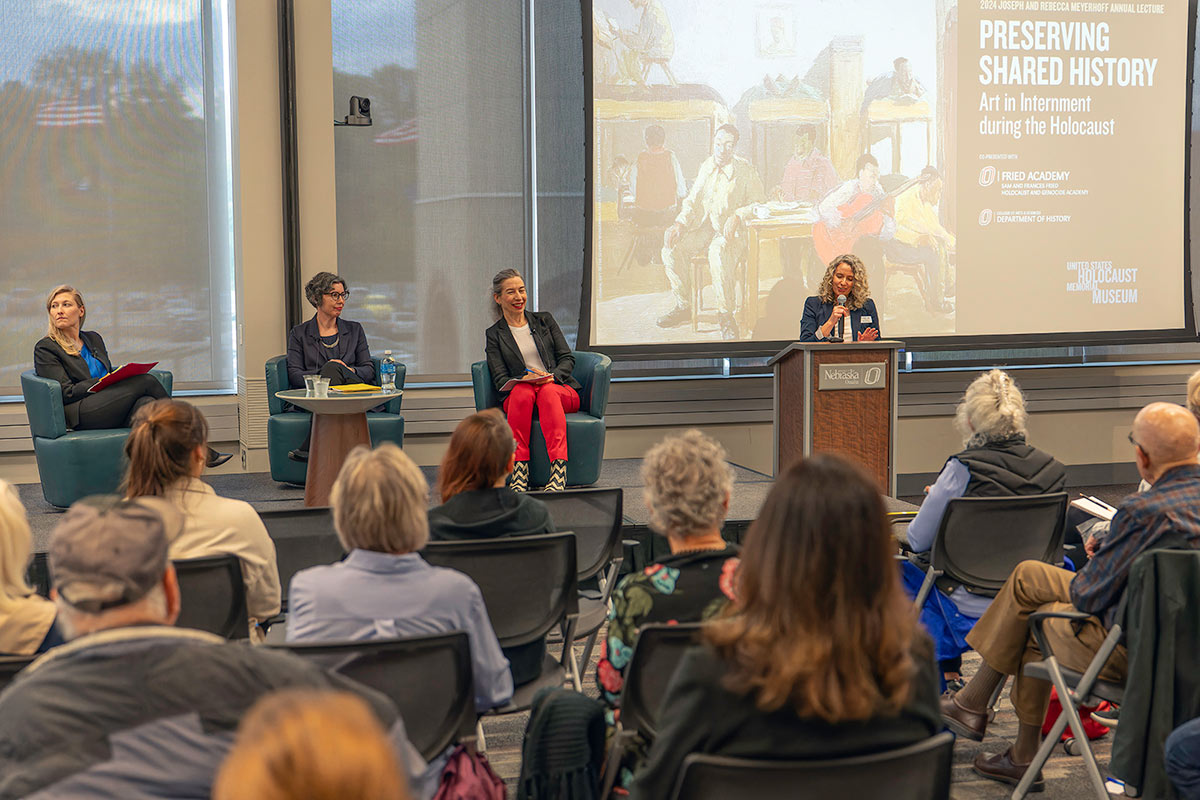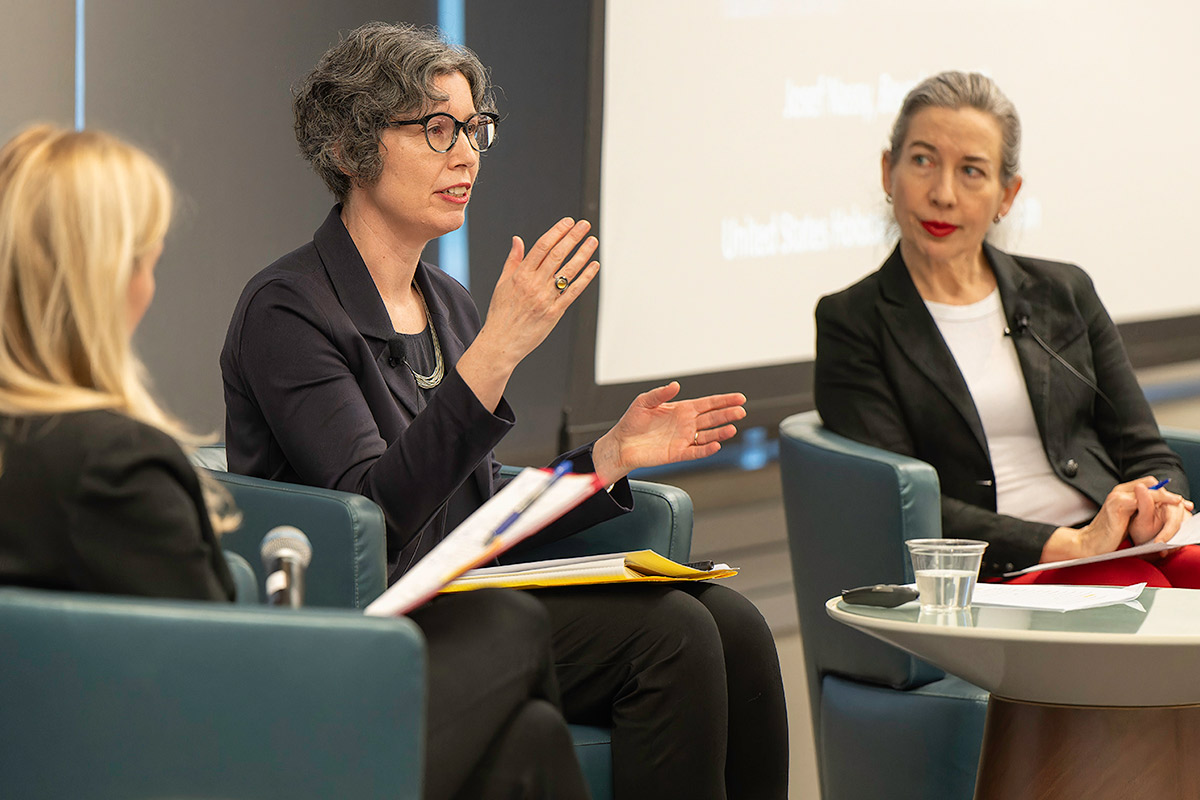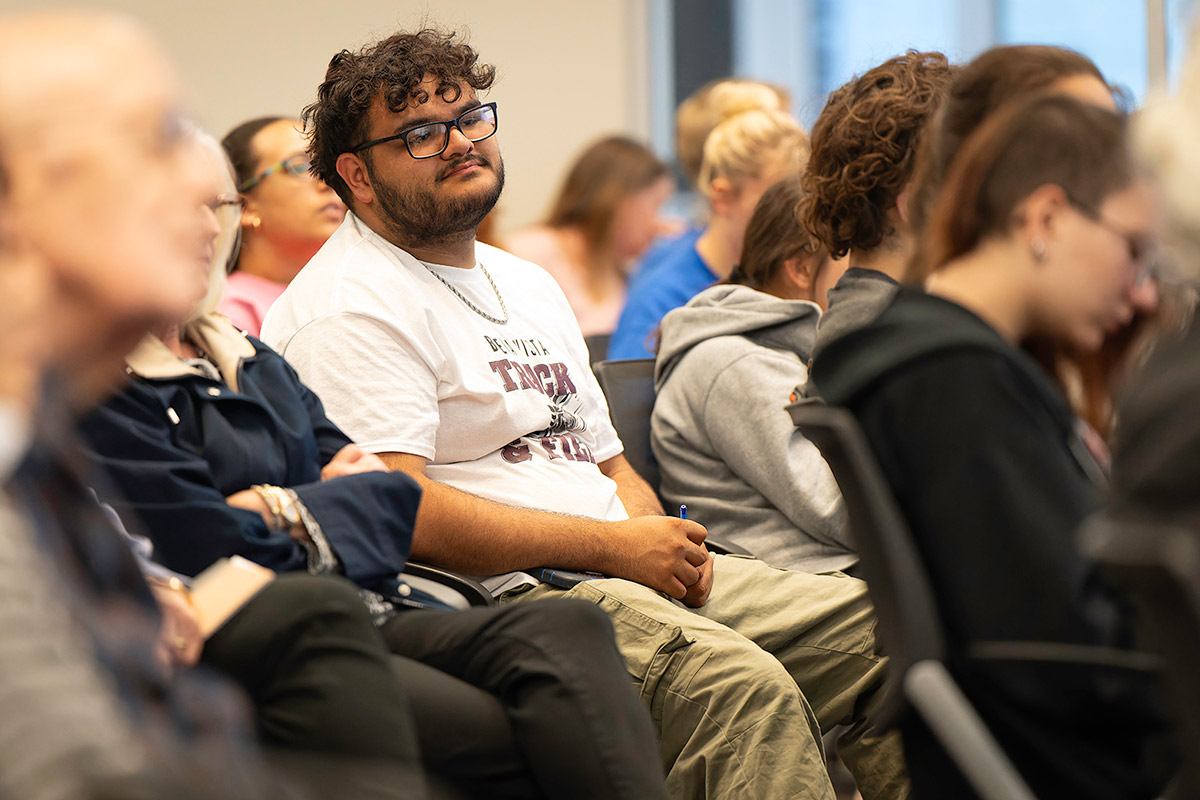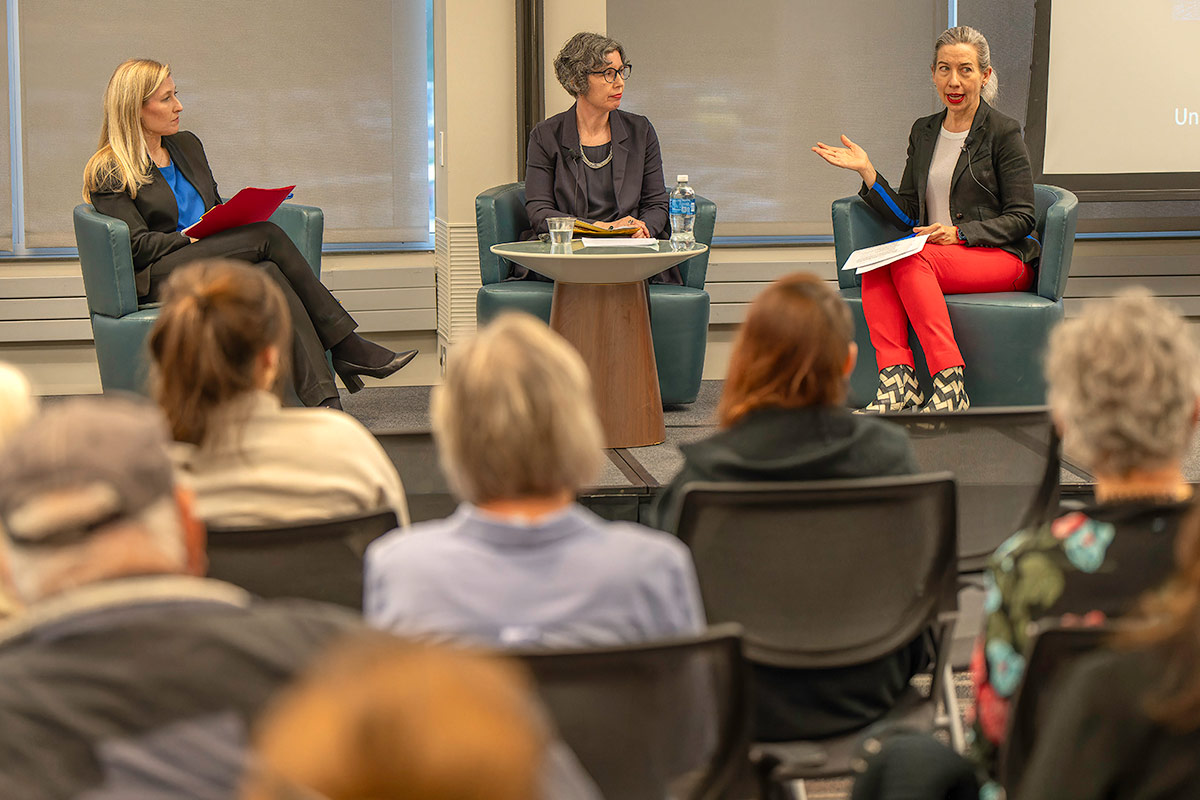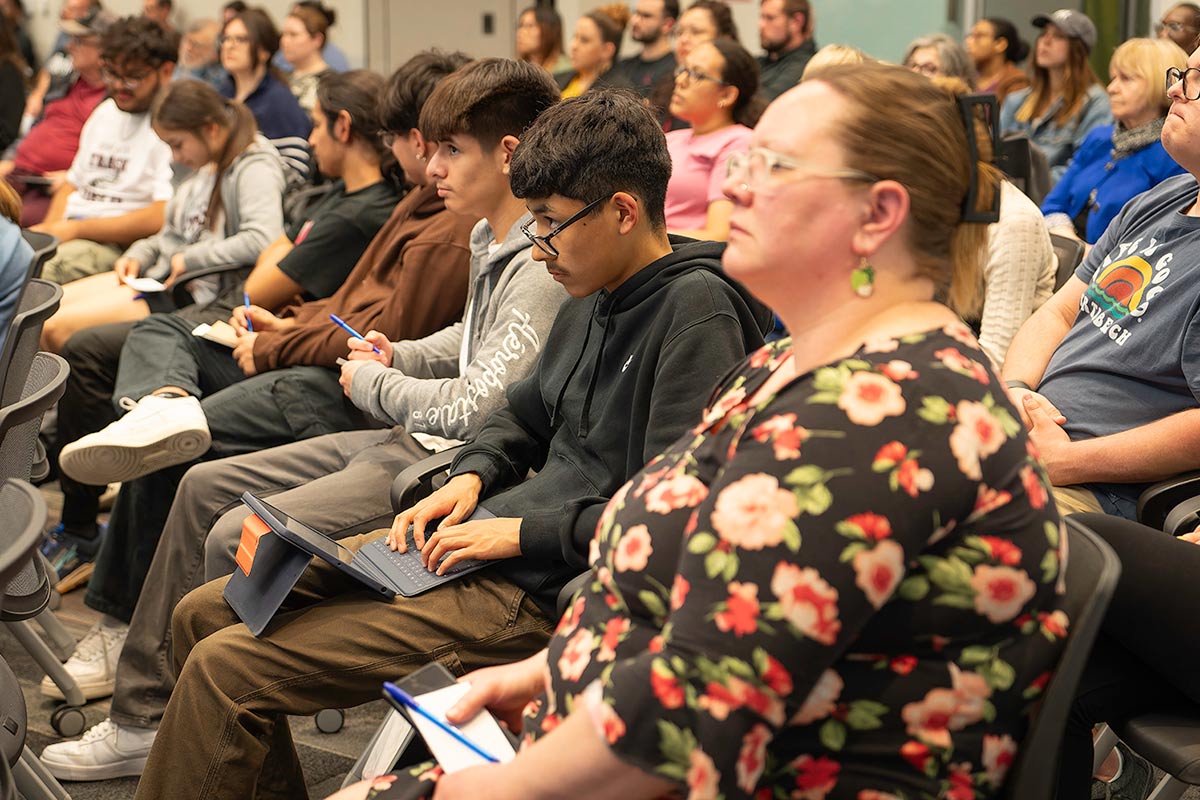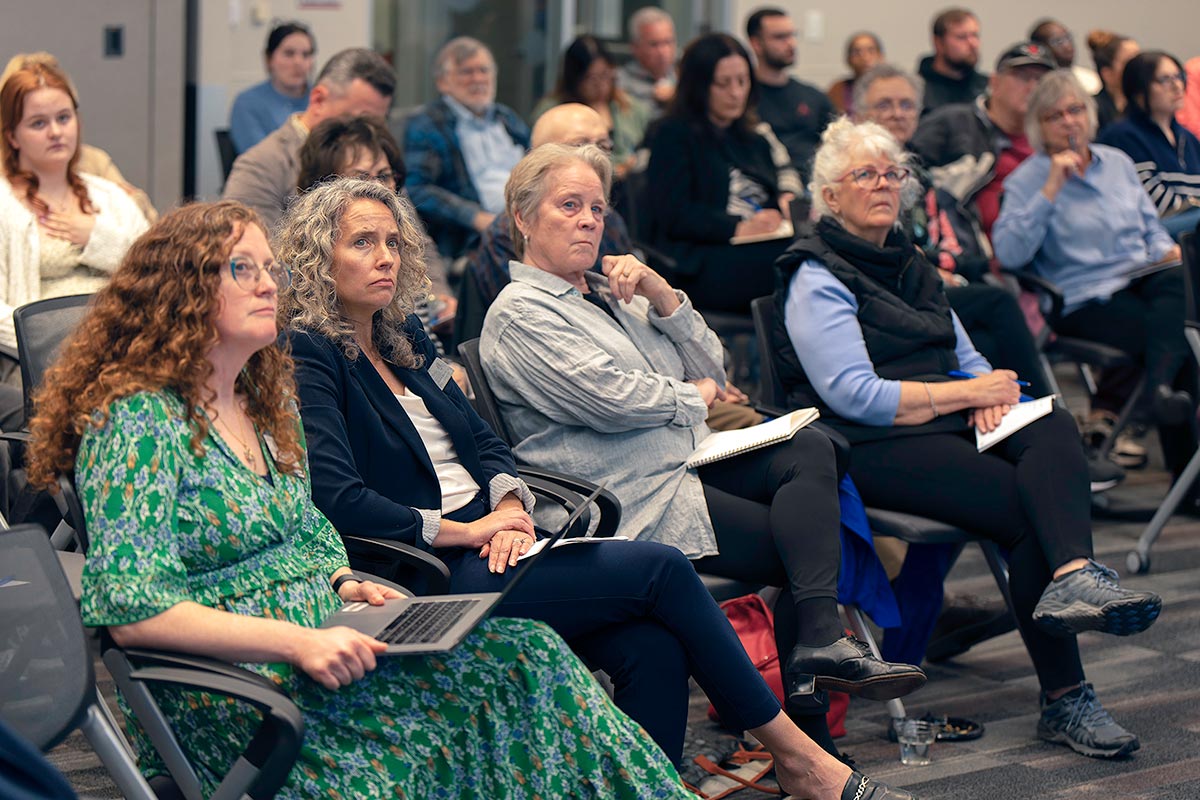Meyerhoff Annual Lecture Explores Art in Internment During the Holocaust
- published: 2024/05/13
- contact: Amanda Craig - UNO Office of Strategic Marketing and Communications
- email: unonews@unomaha.edu
- search keywords:
- Joseph and Rebecca Meyerhoff Annual Lecture series
- Holocaust
- Art
As part of the Joseph and Rebecca Meyerhoff Annual Lecture series, scholars met with UNO students, faculty, and the community on Wednesday, May 1, to discuss artwork produced by Jewish and Black artists interned during the Holocaust and World War II.
Elizabeth Otto, Ph.D., professor of modern and contemporary art history at the University at Buffalo, began the event by providing a short history of the Holocaust and context for the artists to be featured in the lecture.
“From 1933 to 1945, in order to control political dissent, extract forced labor, hold enemy soldiers, and carry out the disempowerment and later genocide of Europe's Jews, Nazi Germany and its allies established more than 44,000 sites of incarceration,” explained Otto.
During this time of oppression and chaos, a Jewish artist and teacher named Friedl Dicker-Brandeis, along with her apprentice Edith Kramer, began working with children of political refugees from Nazi Germany. Dicker-Brandeis used art as a form of therapy, helping those traumatized children to retain their creativity and strengthen their individual identity and courage.
In 1942, Dicker-Brandeis was deported to the Theresienstadt Ghetto, a forced labor camp in Terezín. Bringing paper and art supplies with her, she was able to continue her art therapy work with children in the camp. She taught them different methods of art, such as movement exercises and still life drawings.
“Before her October 1944 deportation to Auschwitz, where she was murdered, she packed over 4,000 of their drawings into suitcases and hid them in the attic of one of the dormitories,” said Otto. Those drawings were later found and preserved. Her apprentice Edith Kramer, who fled to the U.S. in 1938, continued and expanded on what she learned from Dicker-Brandeis and established a strong legacy of art therapy that is still used today.
Sarah Phillips Casteel, Ph.D., professor of English at Carleton University, then turned the audience’s attention to Josef Nassy, a Caribbean artist of African and Jewish descent.
“He moved in 1918 to New York City, where he attended high school and earned a degree in electrical engineering,” Casteel said. Then, “much like a number of African Americans during the interwar years, he eventually sought greater freedom and prospects through immigration to Europe.”
Nassy first moved to England, then settled in Brussels with his wife. Unfortunately, the timing of this move and his association with the U.S. would prove detrimental. Seeing him as an enemy citizen of the U.S., he was taken as a prisoner of war in 1942, eventually incarcerated in the Tittmoning internment camp in Germany.
While interned there, he depended on his art to hold onto a sense of normalcy and creativity. He drew a vast collection of portraits of the other prisoners there and painted scenes of life in the camp. Many of his oil paintings portray the cramped barracks that he shared with nine other Black prisoners, including muted scenes of the men writing or playing instruments.
Casteel noted the importance of highlighting the artwork produced by artists such as Nassy and Dicker-Brandeis, stating that their work is often ignored in broader studies of the history of the Holocaust.
“Broadly speaking, art produced in the camps is viewed as having less documentary value than photography or film,” explained Casteel. “Moreover, if art produced in the camps tended to be undervalued, the Nassy collection status as internment art rather than concentration camp art has further complicated its perception.”
Despite the changing views of the artwork’s importance and how to present or categorize it, Otto and Casteel shared that the legacies of these artists are being brought more to the forefront of historical discussions and study. The artwork that Holocaust and World War II prisoners were able to make demonstrated their efforts to maintain individual autonomy and an enduring spirit.
The evening’s discussion was moderated by UNO’s department of history chair, Danielle Battisti, Ph.D. The event was also part of a larger series, “Physical and Social Spaces of Exclusion: Nazi Germany and the Great Plains,” organized by the Jack, Joseph and Morton Mandel Center for Advanced Holocaust Studies at the U.S. Holocaust Memorial Museum and UNO's Sam and Frances Fried Holocaust and Genocide Academy. The three-day program engaged with more than 400 students, faculty, and community members.
